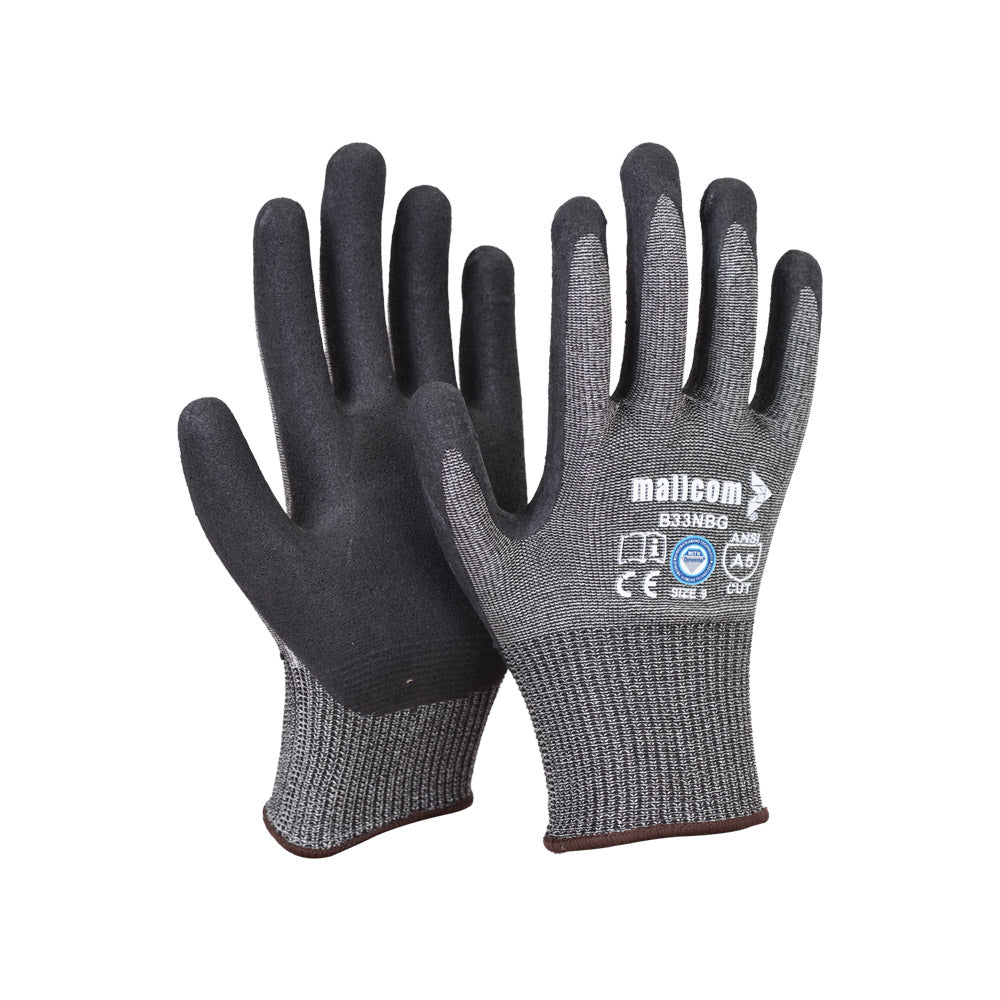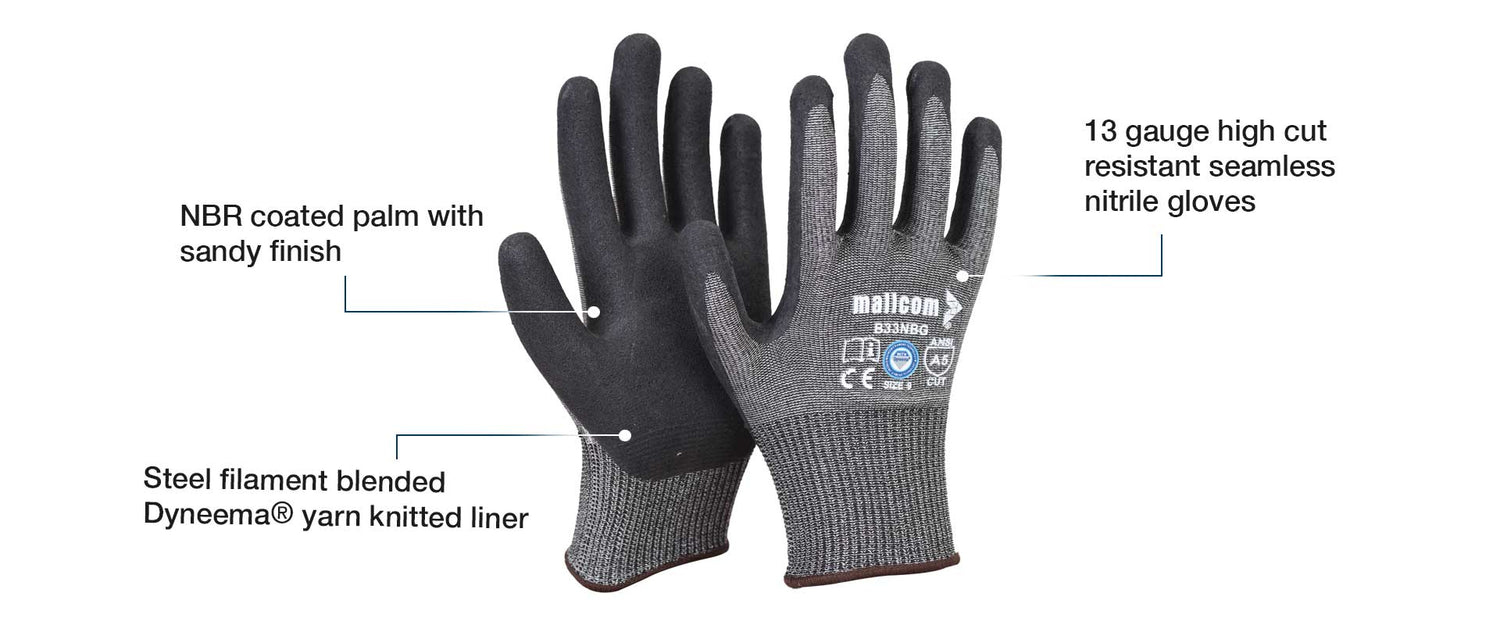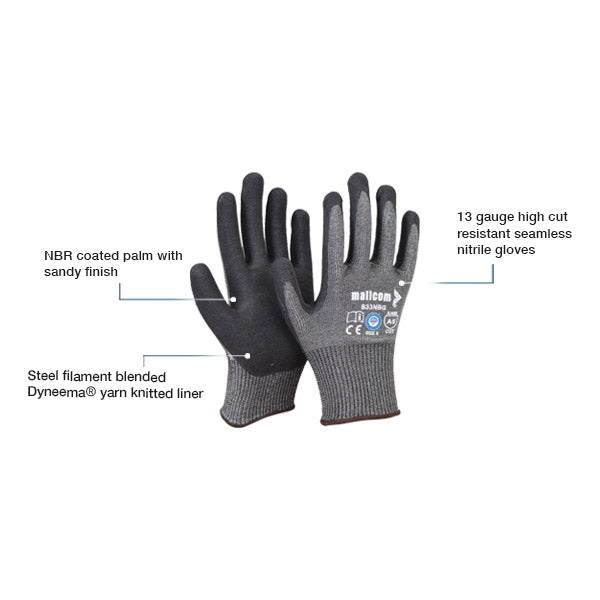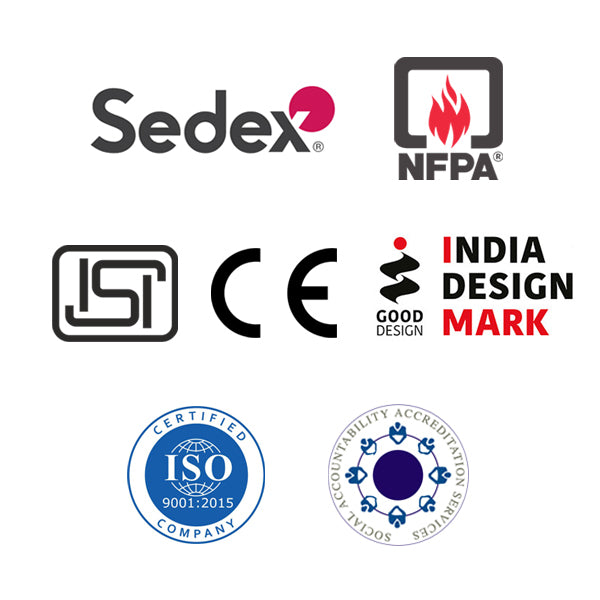B33NBG
Share
Seamless Nitrile Gloves
- The B33NBG is a High Cut Resistant Seamless Nitrile Coated Gloves Blended with Steel Filament. Sandy Finish
- Steel wire blended liner,grey in color.
EN 388
Delivery & Services

Easy Return
with our 15 days return poicy
Regular price
Rs. 0
Sale price
Rs. 0
Regular price
Tax included.
Shipping calculated at checkout.

ABOUT THE DESIGN

USEFUL IN THESE INDUSTRIES
AUTOMOBILE
GLASS & CERAMIC
LOGISTICS
HEAVY ENGINEERING

Product Features
ABOUT THE DESIGN

USEFUL IN THESE INDUSTRIES
AUTOMOBILE
GLASS & CERAMIC
LOGISTICS
HEAVY ENGINEERING
Product Details
























